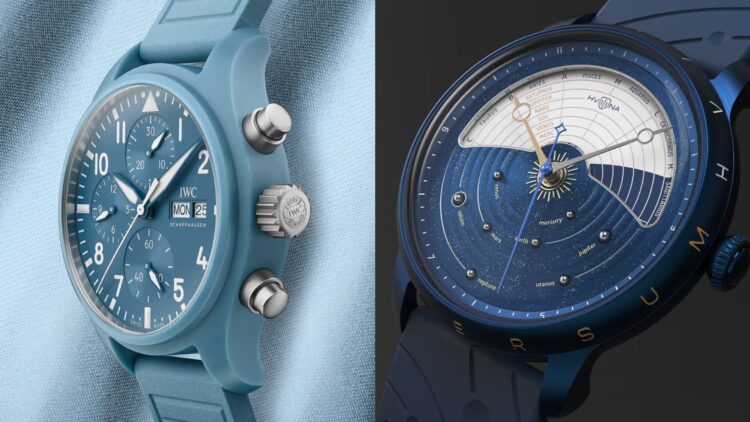Everyone has fantasised about flying through the clouds, or rocketing into space – and one way to realise that fantasy is by having one of these watches on your wrist.
From encapsulating a legendary fighter pilot school, to putting the solar system in your hand – here are two new timepiece drops that take to you to the skies, space and beyond.
IWC Pilot’s Watch Chronograph 41 TOP GUN Miramar

The new Pilot’s Watch Chronograph 41 TOP GUN Miramar, which comes in two different editions, adds to IWC’s Colours of TOP GUN collection. The unique model, which is only available in 1,000 pieces, has a light blue ceramic case that was created by Pantone® and was influenced by the t-shirts that TOP GUN instructors wore.
Zirconium oxide and metallic oxides are mixed in exact ratios during the manufacturing process of the coloured ceramic case, necessitating numerous trials to produce the desired shade and uniformity across the dial and strap.
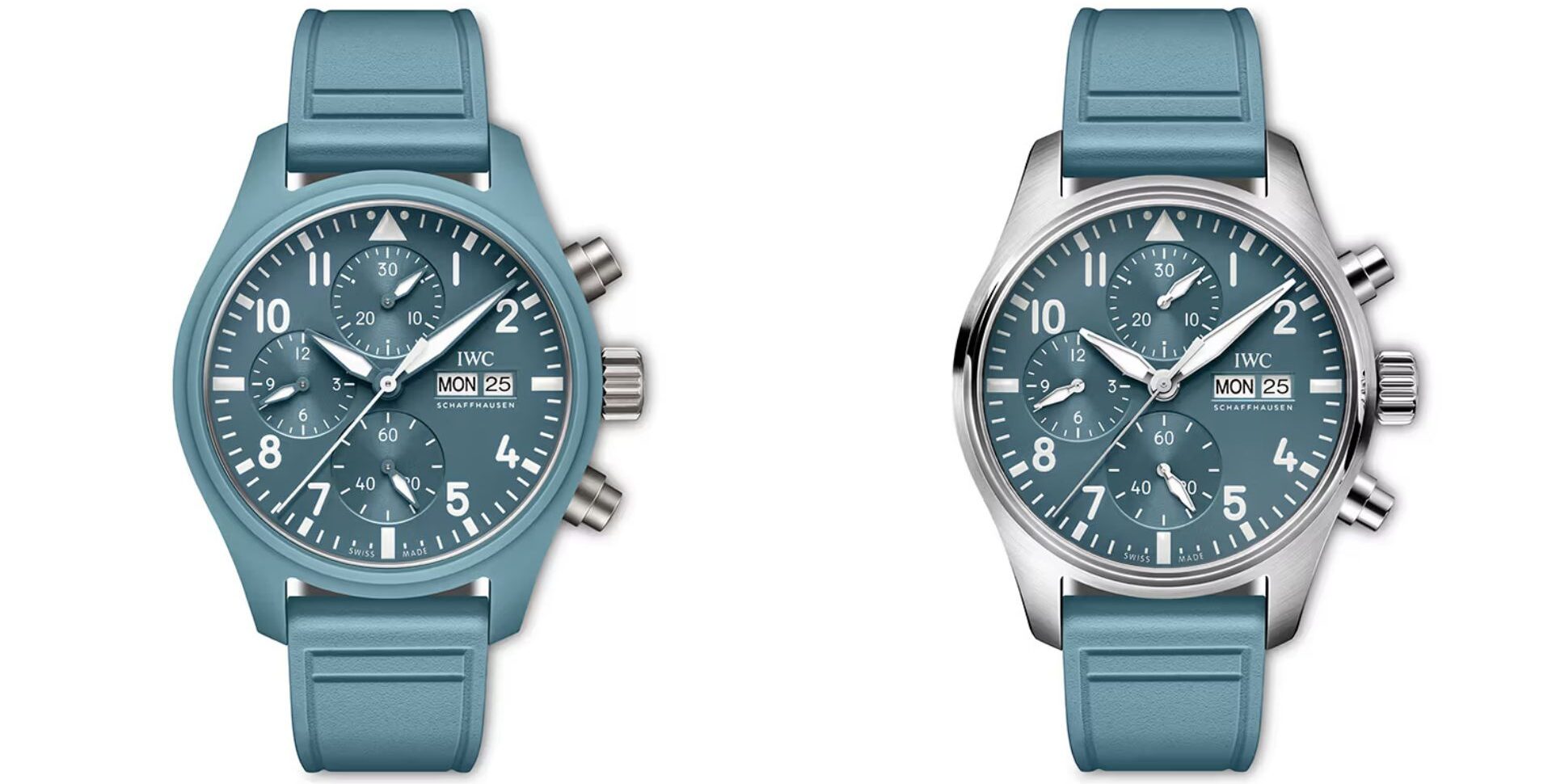
The ceramic case is combined with a rubber strap and dial that are both the same shade, making for a unified and eye-catching design. The IWC 69380 calibre, a high-precision chronograph movement with a column-wheel design and 46 hours of power reserve, powers this edition.
It includes a titanium case back engraved with the “TOP GUN” logo and a soft-iron inner case for magnetic protection.
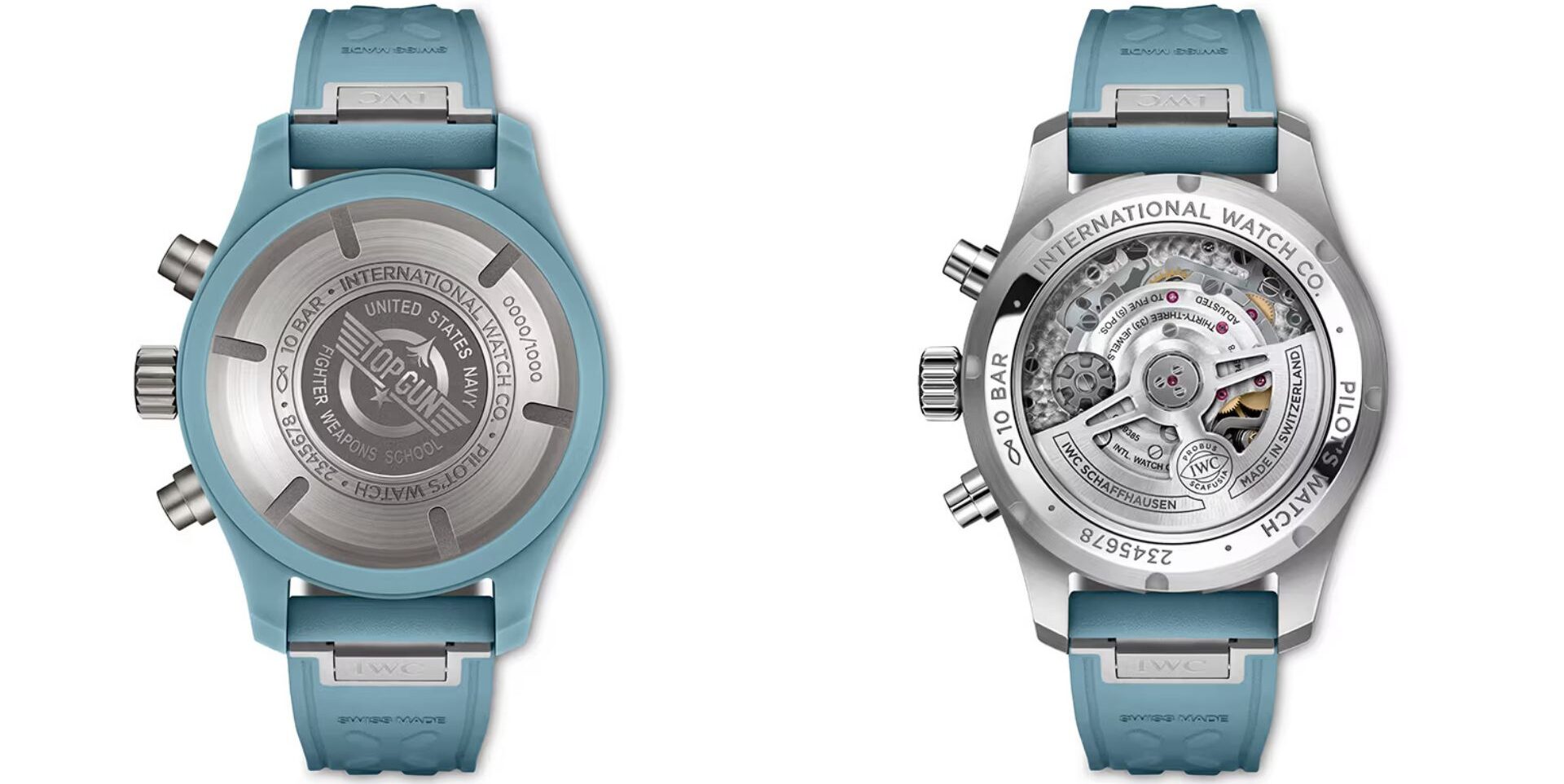
The Maison also introduces a stainless steel edition in addition to the ceramic one, which is the first time a Pantone® colour from the TOP GUN series has been used in a non-ceramic watch. This model comes with a matching rubber strap, a Miramar blue dial, and a 41mm steel case.
Legibility is improved by rhodium-plated hands that are filled with Super-LumiNova®, and the in-house 69385 movement is visible through the open caseback.

With the help of IWC’s EasX-CHANGE® system, users of both models can easily switch up the straps to match their outfit or mood. The ceramic version costs US$13,500 (~RM57,057), while the steel version costs US$7,200 (~RM30,430), both of which can be purchased through IWC.
HVILINA’s Universum Cosmographia
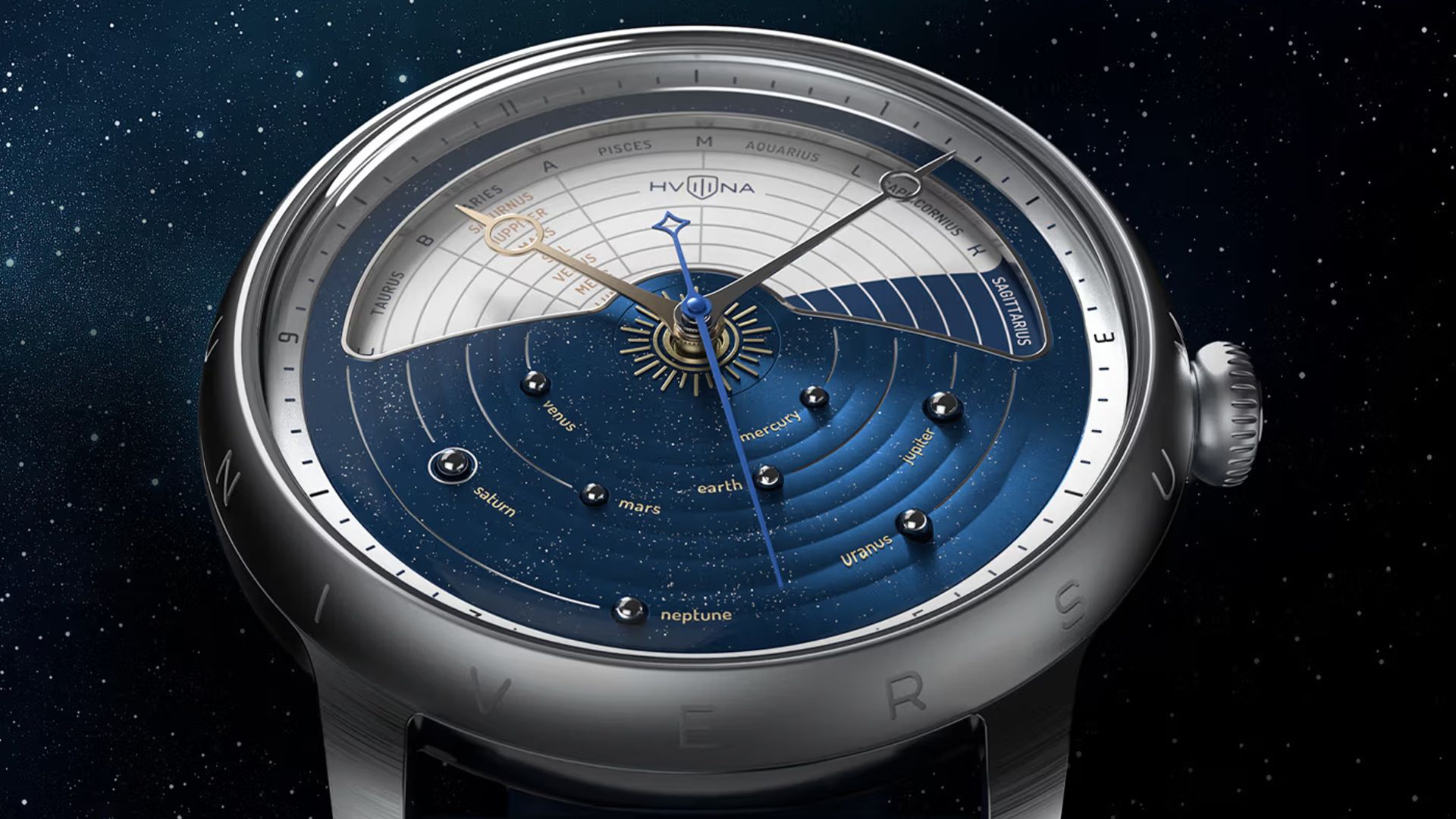
The recently unveiled Universum Cosmographia by HVILINA is a watch that skilfully blends contemporary horology with historical astronomy. With a three-dimensional planetarium and a GMT disc modelled after a celestial chart from the ninth century, the watch draws inspiration from both contemporary planetary science and mediaeval star maps.
The project, which was created in partnership with Professor Richard Kerner, a mediaeval cartography specialist and physicist at the Sorbonne, connects traditional cosmological worldviews with contemporary innovation.

The watch, which has a 50-meter water resistance and sapphire crystals on both sides, is housed in a stainless steel case with a redesigned bezel and caseback. A finely detailed 3D model of the Solar System, with tiny stylised planets that seem to float in zero gravity, is at its centre.
The multi-layered dial is enhanced by guilloché engraving, which gives it depth and a sense of celestial movement.

Through a sculpted aperture above the planetary display, a mediaeval star map is revealed by a rotating GMT disc.
The zodiac constellations’ Latin inscriptions, on the other hand, show the day and night as contrasting halves of light and dark, forming a 24-hour cycle.
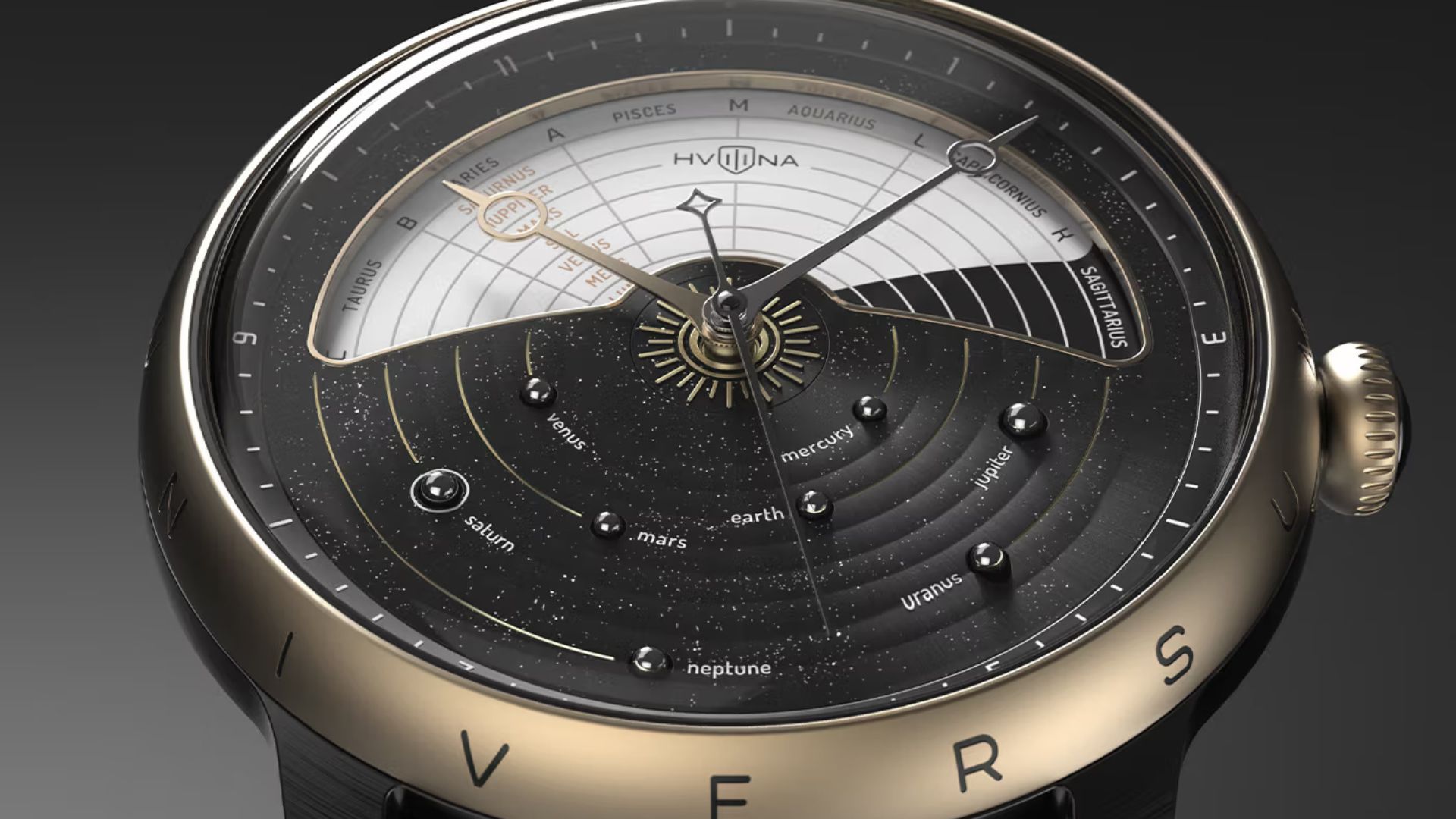
The timepiece is powered by the Miyota 9075 Premium automatic movement, delivering GMT functionality, a 42-hour power reserve and a daily accuracy of -10/+30 seconds.
The movement’s rotor is engraved with trans-Neptunian objects. The astronomical theme is furthered by the inclusion of the oval-shaped dwarf planet Haumea.
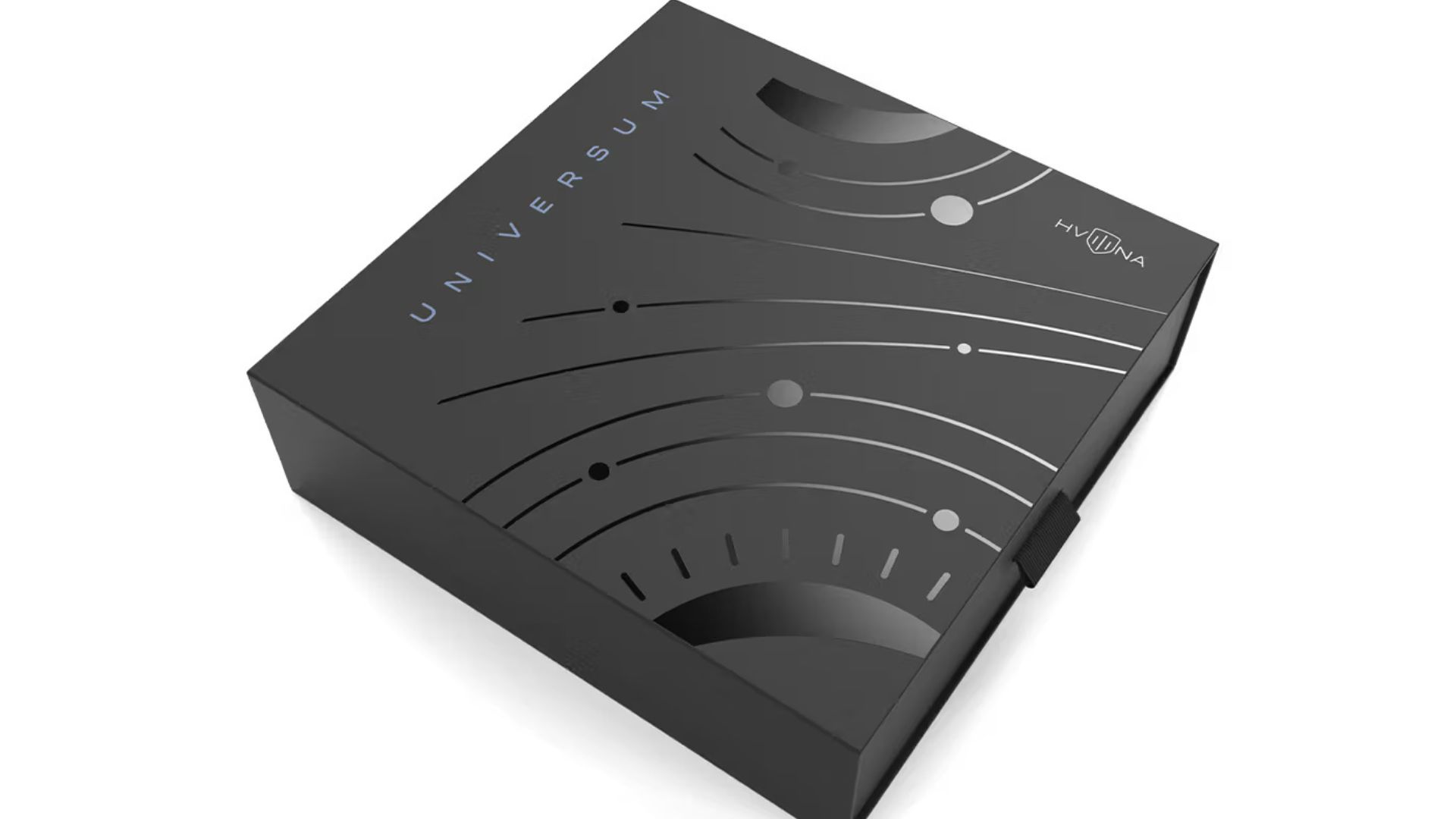
The timepiece, which retails for EU€400 (~RM1,985), can now be pre-ordered through HVILINA’s online store. The official release date of the watch is November 2025.

